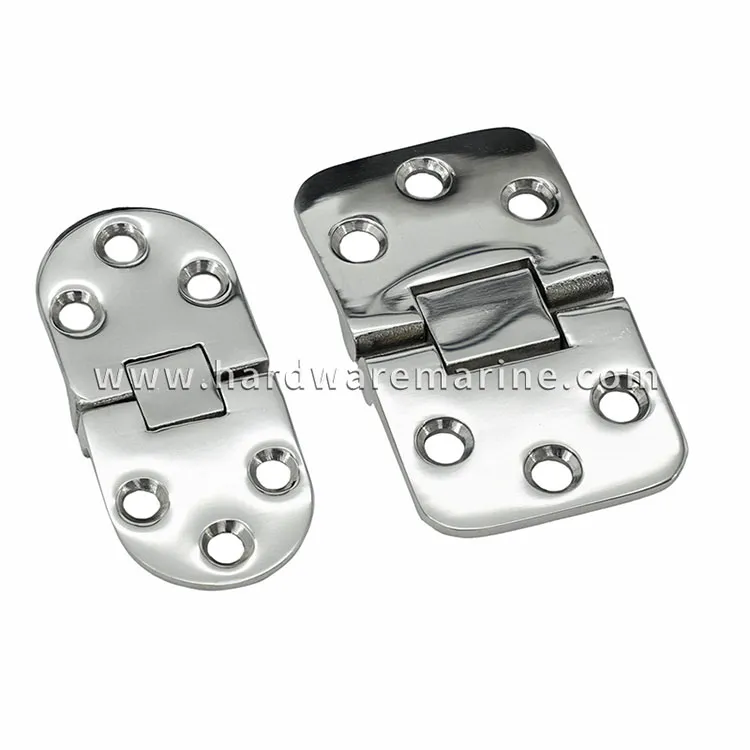A Comprehensive Guide to Marine Hardware: What You Need to Know
2024-09-02
Introduction
Marine hardware is essential for the safe and efficient operation of boats and ships. These components, which range from anchors to rigging and cleats, are specially designed to withstand harsh marine environments. This guide will cover the basics of marine hardware, the different types available, and how to choose the right hardware for your vessel.
1. What is Marine Hardware?
Marine hardware refers to a broad category of equipment used in the construction, maintenance, and operation of watercraft. This equipment is designed to perform specific functions on boats, yachts, ships, and other marine vessels. The hardware must be resistant to corrosion, rust, and the harsh effects of saltwater, which makes it unique compared to regular hardware used on land.
2. Types of Marine Hardware
Marine hardware comes in various types, each serving a specific function. Here are some of the most common categories:
- Anchoring Hardware: This includes anchors, chains, and anchor lines. Anchors are crucial for keeping a boat stationary in the water. They come in different types, such as fluke, plow, and mushroom anchors, each suitable for different seabed conditions.
- Mooring Hardware: Mooring components, such as cleats, bollards, and mooring lines, are used to secure a boat to a dock or buoy. Cleats are metal fittings attached to the deck of a boat, where mooring lines can be tied to hold the boat in place.
- Rigging Hardware: For sailboats, rigging hardware includes items like turnbuckles, shackles, and blocks. These components are used to adjust and secure the tension in the sails and mast rigging.
- Deck Hardware: This category includes hatches, portlights, handrails, and grab bars. These items are essential for safety and convenience on deck, providing access, ventilation, and support.
- Safety Hardware: Safety is a top priority on any vessel. Safety hardware includes life rings, fire extinguishers, bilge pumps, and life jackets. This equipment is essential for the safety and well-being of passengers and crew.
- Navigation Hardware: This includes compasses, GPS units, and radar reflectors. Navigation hardware is vital for safely navigating waters, especially in poor visibility or unfamiliar areas.

3. Materials Used in Marine Hardware
The material choice for marine hardware is critical due to the corrosive nature of the marine environment. Common materials used in marine hardware include:
- Stainless Steel: Highly resistant to rust and corrosion, stainless steel is a popular choice for many marine applications. It is strong, durable, and can withstand exposure to saltwater and harsh weather conditions.
- Bronze: Bronze is another excellent choice for marine hardware due to its corrosion resistance. It is often used in fittings and components that require durability and a classic appearance.
- Galvanized Steel: Galvanized steel is steel that has been coated with a layer of zinc to prevent rust. It is a cost-effective option for marine hardware but requires regular maintenance to prevent corrosion.
- Aluminum: Lightweight and resistant to corrosion, aluminum is often used for parts that need to be strong yet lightweight, such as masts and booms.
4. Choosing the Right Marine Hardware
Selecting the right marine hardware depends on various factors, including the type of vessel, intended use, and environmental conditions. Here are some tips for choosing the right hardware:
- Consider the Environment: For boats that operate in saltwater, corrosion resistance is a top priority. Stainless steel and bronze are excellent choices due to their durability and resistance to rust.
- Match the Load Requirements: Ensure that the hardware can handle the load and stress it will be subjected to. For example, the anchor and mooring lines must be strong enough to secure the vessel in strong currents and winds.
- Safety First: Always choose hardware that meets safety standards and regulations. High-quality safety equipment is essential to protect passengers and crew.
- Ease of Use: Choose hardware that is easy to operate and maintain. For example, self-locking cleats make mooring easier, while quick-release shackles are convenient for rigging adjustments.
5. Maintenance of Marine Hardware
Proper maintenance of marine hardware is essential to ensure its longevity and performance. Here are some maintenance tips:
- Regular Cleaning: Rinse hardware with fresh water after use, especially after exposure to saltwater. Salt and grime can cause corrosion and wear over time.
- Inspection: Regularly inspect hardware for signs of wear, corrosion, or damage. Replace any damaged or worn-out components promptly to prevent accidents or failures.
- Lubrication: Moving parts, such as winches and turnbuckles, should be lubricated regularly to ensure smooth operation and prevent rust.
- Protective Coatings: Apply protective coatings to metal surfaces to prevent corrosion. Galvanized steel components may need to be recoated periodically to maintain their protective layer.
Conclusion
Marine hardware is an integral part of any watercraft, providing functionality, safety, and durability. Understanding the different types of marine hardware, choosing the right materials, and maintaining them properly will ensure that your vessel operates efficiently and safely. Whether you're outfitting a small sailboat or a large yacht, investing in quality marine hardware will pay off in the long run, offering peace of mind and a smoother sailing experience.


